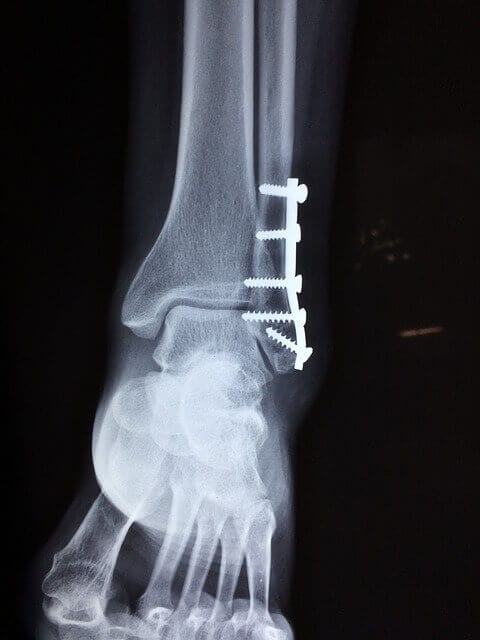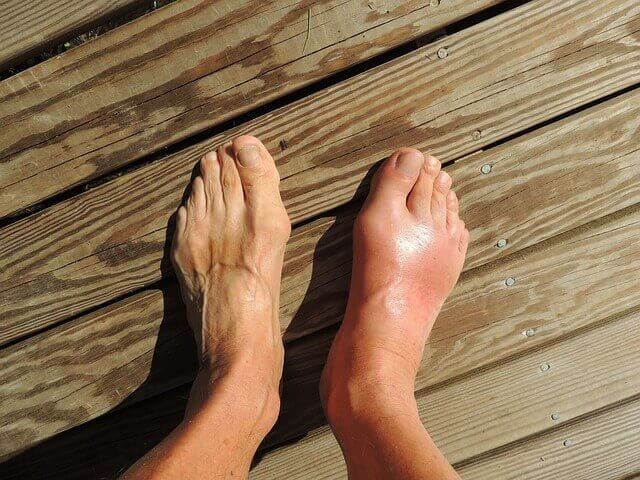A fracture is a break in your bone that its severity can range from a stress or hairline fracture to a full break across the foot. This problem can cause significant discomfort. You normally find fractures in runners, football players, basketball players, or people exerting much force and strain on their feet. They will be very serious if you don’t go to see a medical professional. In this article, we will give information on how to treat a foot fractures and some others related to this problem.
Emergency Department Care

Immediate care includes immobilizing, icing, providing analgesia to all patients, and elevating the foot. Forefoot fractures sufferers often have associated soft tissue damage. You should come to options for initial immobilization such as Rigid and flat-bottom orthopedic shoe, reinforced bulky dressing including a web roll and an elastic compression bandage, posterior or stirrup splints, and definitive immobilization.
How to Treat a Foot Fracture
1.Treating a Minor Fracture at Home
Recognize the symptoms of a fracture in your foot: Its symptom normally starts out as a slight discomfort. It’s discovered in the front of the foot. It causes very slight pain only during long periods of exercise, working out or running. Indeed, this is actually a tiny crack in the bone. In fact, this pain will vanish after you stop your activities. Therefore, many people don’t pay attention to consider a fracture. There are some different symptoms including throbbing pain, swelling, discoloration or bruising.

Learn the “RICE” treatment plan: This method is great for any kind of bone fracture or stress fracture. It’s considered as the best effective way to treat a fracture at home before you can look for medical care.
- Rest: It’s essential to stop immediately all of your activities. At the same time, avoid any activities that can cause pain to your foot. Moreover, you shouldn’t run, do exercise, or do whatever you feel the pain.
- Ice: Immediately put ice on your injured area. Also, don’t apply heat on these areas in order to encourage more blood as well as make the swelling worse. Take about 20 minutes to ice the injured area with crushed ice in a damp tea towel.
- Compression: Use a bandage fairly snugly to wrap your injury to decrease swelling. Don’t wrap too tight to avoid cutting off the circulation as well as tingling, numbness, and discoloration.
- Elevation: It’s great to sit or lie down. And, you should keep the injured foot elevated as well. In order to reduce swelling, you should also keep the injured foot above the level of your heart.
Take some acetaminophen: If you have fractures, you may face some considerable pain. Thus, it’s important to treat the pain safely. Moreover, don’t look for ibuprofen and naproxen sodium for your treatment. It’s because they can come with the potential to delay the healing process.
Go see your personal physician: We recommend you to see your doctor as soon as the pains have subsided. He will help to give some X-rays of your foot in order to confirm your self-diagnosis. Depending on your severity of the fracture, find a cast in conjunction with crutches or a walking boot. Furthermore, she can also help to refer you an athletic trainer if you need. Especially, this is essential when you want to get a help to safely exercise again.
2. Treating An Emergency Fracture Due to Trauma

Keep the person calm: It’s hard to avoid a state of shock when a person fractures a bone because of trauma or a fall. The thing you need to do is keeping that person as calm as possible. Then, get the emergency or transport them to the hospital. You can reassure her by talking to her in a soothing voice. At the same time, tell her the help is on the way. Also, remember to keep her in a comfortable position. It’s essential to learn how to recognize and treat symptoms of shock such as dissociation, sudden shortness of breath, sweating, paleness, and dizziness.
Assess the fracture: The fact is that most fractures to the foot are not severe. However, there are some serious injuries caused by a very heavy object falling onto the foot or a car wreck. Therefore, call 911 immediately if she is losing a lot of blood.
Stop any bleeding and immobilize the fracture: Put clean pads like ABV over the wound. It’s wrong if you try to bandage because this may aggravate the injury. Moreover, you can make a support splint for the injury from long bandages or pins, a pillow, or a blanket. They can also be used for closed fractures.
3. Seeking Medical Help

Head to the emergency room: For a person with a broken foot, it’s important to give her medical treatment to devise a treatment plan. A doctor can give her an exact diagnosis of a break.
Get your foot X-rayed: You can receive an X-ray of the bones in the foot or a series of examinations and tests at the hospital. They can show if the bone is fractured severely or not. This is the only way to determine that the foot is fractured.
Follow the treatment plan: You will get a treatment plan from your doctor to minimize your injury depending on your severity and location of the break. If you have a very minor break, you just need to keep your foot elevated. Also, don’t bear weight on it during your treating process. Sometimes, you need an air boot or cast for the break that is more serve.
Conclusion
In conclusion, it may be a challenge for many people to deal with a broken or fractured foot. Therefore, it’s important to look for the ways to stay positive while your fracture heals. It’s essential to follow your doctor’s treatment plan. Also, you need to rest your broken foot when needed to help it recover time. In addition to that, you also should find the best mobility device to regain mobility and independence for your foot.
